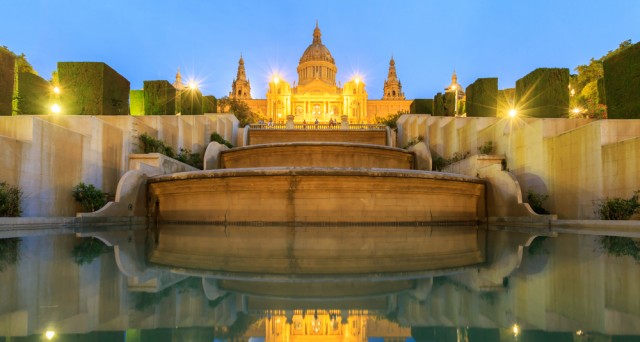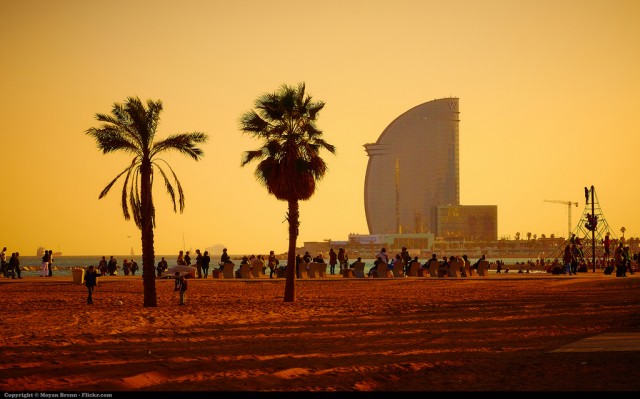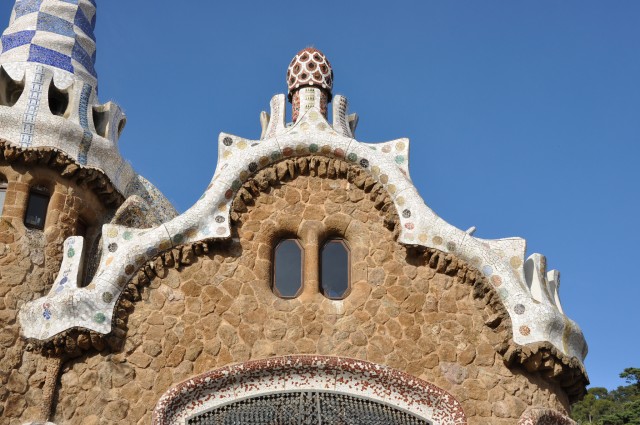 the Travel Enthusiast
the Travel Enthusiast
- 02 Mar
Adam in Amazing Places | NO COMMENTSBarcelona, A Scene Filled with Life
The Capital of Catalonia becomes more interesting year by year.
The heart of Barcelona is the “La Rambla”. Almost everybody who visits the city will go through it at least once, no matter if it’s day or night, everybody will experience the striking boulevard which connects the renowned Plaza de Cataluna with “La Rambla”.
Bird breeders, flower vendors, boys with newspapers, every each one of them has it’s own place on the 2 km long and 45 width promenade. At the sidewalks there are lot’s of cafes, ice cream stalls, and bars. Boqueria, the enormous fish market opens at 5:00 AM in the morning, and at nights are con-coursed at the opera, at the hall with over 500 seats and also where the ticket is hard to achieve because of the crowd, although the tickets are expensive.
A tourist in Barcelona feels the cosmopolitan atmosphere, the thirst for life and the pride of art. The Capital of Catalonia still perceives the connection to Northern Europe and the Alps. Between its walls Frankish and Visigoth kings lived, like Charles the Bald, the responsible, according to the legend, the Catalan blazon. It is said that during the siege of Barcelona by the Moors, he himself covered his 4 fingers with the blood of the wounded hero Guifre el Pilos, and fringed 4 lines at the shield of the dying hero, 4 red lines at the golden shield.
The Eavesdropping King
The city along with its port was founded by the Romans and began to prosper. In the Middle Ages, it was the residence of the rulers of the Franco-Catalan Aragon, and El Barrio Gotico (the Gothic neighborhood) keeps the severe line of the Catalan Gothic style along with the impressive cathedral. It’s simple beauty flourished at the 14th century, the first assembly of the autonomous city.
Columbus, Colon in Spanish, and Colom in Catalan, is revered in Barcelona as a protector saint. The citizens accompanied the future explorer of America from the port to the Royal Palace where he was received and greeted by Isabella I of Castile and Ferdinand II of Aragon. Later, a 65 m tall monument of Columbus was heightened near the port. Not far there is an anchored copy of Santa Maria. which brought the explorer to America.
Tourists travel through the rode of Columbus,about 650 meters from the port to La Rambla and from there right to the Plaza Del Rey where also stairs leads to the Palau Reial Major. Here, at Salon Tinell, the explorer bowed in front of his kings, being accompanied by few Amerindians.
- Flights
- Hotels
- Packages
- Cars
- Cruises
travel search by Travelgrove (get this widget)Picasso at the Old Palaces.
Many medieval buildings have important roles in the cultural life of the city like the museum. Not less than 3 Palaces hosts the creations of Picasso. From time to time, Catalan food can be tasted at the old places like Can Culleretes or Los Caracoles.
Even modern times left different sings on Barcelona. Some of them being the houses of usual people which can be admired at the Golden Square, being covered by about 150 modernist buildings. Famous architects, like Antoni Gaudi, projected houses with 5 floors, with entrances like caves, curly and winding roofs, with such sculpture type like it was taken out of fairy .
The same masterpiece of Gaudi, the Sagrada Familia cathedral, which was started in 1882 took an important role for the city. From the death of the architect in 1926, only one of the 18th spires was finished which nowadays can be seen.
After the explosion of Art Nouveau and modernism, which took between the XIX and the XX century, new architectural ideas marked the city because of its international expositions from 1929. The Olympic Games of 1992, when galleries of modern arts and complex sportive futuristic works appeared on the Montjuic hill. Here, architect Josep Lluis Sert constructed a museum which protects and shows the supra realist works of painter, Joan Miro(1893-1983). The master entered in history with the sculpture of “Dona i Ocell” – Lady with the bird, and also with the mosaics from the Ramblas.
You might also like



